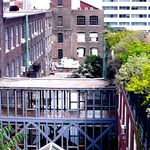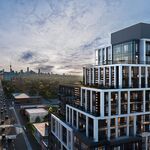News release
Toronto, Ontario, May 12, 2021—Public transit is at the heart of an inclusive recovery, and we must prioritize measures that will build the public transit systems Canada needs now, and in the future. Investing in public transit supports Canadians through the pandemic, positions Canada for recovery by creating good jobs and supporting Canadian companies, and transforms our society for a cleaner, better future.
Canada is a world leader in transit manufacturing, including the production of subway, light rail and zero-emission vehicles, and workers are employed in this sector right across the country. All orders of government are committed to supporting these workers and their families and protecting good, middle-class jobs.
Today, the Honourable Catherine McKenna, federal Minister of Infrastructure and Communities, the Honourable Patty Hajdu, Minister of Health and Member of Parliament for Thunder Bay–Superior North, Marcus Powlowski, Member of Parliament for Thunder Bay—Rainy River, the Honourable Caroline Mulroney, Ontario’s Minister of Transportation, the Honourable Greg Rickford, Minister of Energy, Mines, Northern Development and Indigenous Affairs and Member of Parliament for Kenora-Rainy River, and John Tory, Mayor of Toronto announced that the Governments of Canada and Ontario signed a deal to support funding of additional electric, zero-emission streetcars in Toronto and sustain transit vehicle manufacturing capacity at Alstom’s manufacturing facility in Thunder Bay, Ontario.
As a part of this deal, which is subject to Treasury Board approval, the Government of Canada would provide up to $180 million in funding to enable the Toronto Transit Commission (TTC) to purchase a total of 60 zero-emission streetcars and expand their Hillcrest storage facility in Toronto. The Government of Ontario is also investing $180 million and the City of Toronto is investing $208 million towards the streetcars and facility upgrades, for a total investment of $568 million. The TTC will procure these streetcars from an existing competitively-procured contract with Alstom, which acquired Bombardier Transportation on January 29. Fulfilling the TTC’s immediate need for 60 additional streetcars will help sustain the Thunder Bay plant in the short term, and could also create a bridge to longer term transit procurement projects.
Under TTC’s existing contract with Alstom, TTC will be able to secure a product order with the plant, protecting hundreds of highly-skilled workers’ jobs at a world-class facility. Separate from the purchase of additional streetcars, Metrolinx, the provincial agency responsible for GO Transit operations, will also continue discussions with Alstom under their existing maintenance contract for the refurbishment of additional GO bi-level coaches. When at full capacity, the Alstom plant is Thunder Bay’s largest private sector employer, sustaining high quality, middle class jobs for hundreds of families.
The plant and its workers have always been part of fulfilling the country’s manufacturing needs, from life-saving ventilators to trains, buses and planes. The road to economic recovery includes cleaner, electrified public transit and Canadian manufacturing workers continue to be a part of the solution. Canada has the skilled workforce, expertise, manufacturing and raw materials needed to make the most of the next zero-emission vehicle revolution.
The purchase of new streetcars will also benefit commuters and families in Toronto who rely on public transit as their only viable option to get around the city. Replacing aging infrastructure and boosting capacity will shorten commute times and help residents travel safely and reliably. Cleaner transit cuts pollution, raises air quality and improves public health. By electrifying our public transit system and linking it to cycling and walking paths, we are investing in a critical solution to climate change and helping to drive Canada and the world to net zero emissions.
Investing in public transit infrastructure will build strong communities across the country and deliver a better quality of life for all Canadians. The government will continue to invest in projects that best support our recovery, create middle class jobs and economic growth, and help us reach our climate targets. Together, we can create a Canada that is cleaner, more competitive, and more resilient for generations to come.




